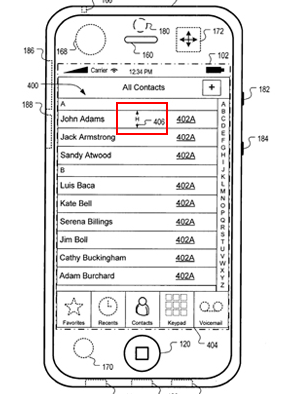If you use a iPhone for a long time, then you know that using the terminal while walking on the street or running has the effect of accidentally touching certain parts of the screen that you don't want to touch and the impossibility of accessing what you want. Apple Lossless Audio CODEC (ALAC), she is aware of the problem and is trying to solve it with an interesting modification that will be applied to iOS, so that the interface of the operating system will change dynamically depending on the orientation of the terminal and our movements.
To compensate, one or more sensors can be used to detect device motion or patterns of motion, which will trigger dynamic UI changes like enlarging a virtual button's touch area or shifting visual assets around the screen. Apple mentions accelerometers, gyroscopes and more as adequate on-board sensors, most of which are already installed on current iPhone models. According to some implementations, the system will resize UI elements and touch areas to compensate for a certain motion. For example, the rows of a contact list may be enlarged by increasing the height of each entry. The touch area is also resized, affording the user a bigger target to hit while moving.
More precisely, the iOS could use the sensors implemented in it to detect the movements and increase the pressing surface of a virtual button or to move various elements on the screen to give us the opportunity to access exactly what we want. In the same way, various tables can be enlarged or reduced, while the menus can undergo exactly the same changes, all of which are done automatically depending on our movements. The implementation of such a system in iOS involves an extremely long testing period and even if we know that Apple is trying to bring an important change, it will take a long time until we have it available.

















